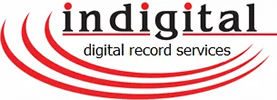Modern companies, both large and small, need to stay flexible in order to keep up with competition and a changing world. One way your business can keep itself flexible on many levels is by moving to a paperless office — a big part of what is often referred to as going digital.
How can doing so make your company more ready to move with the times? Here are four key ways.
1. Flexible Space Use
Paper files need physical storage and workspaces. Digital files free up all that space so that you can use it in more efficient or necessary ways. You won’t have to fill offices with file cabinets, keep related office supplies everywhere, and store boxes of documents on-site until their expiration dates.
Instead, you can add more employee offices, spread out staff, or bring in new pieces of equipment. And since you aren’t tied to a particular storage configuration — such as having to keep accounting records in a secure, adjacent location — you also have more freedom to alter your physical offices as needs change. Many modern offices use this extra room to create meet-up areas, conversation lounges, or extra work tables.
2. Flexible Working Locations
If your employees aren’t tied to a physical location to produce, maintain, or store records, they are freed up to work anywhere. Could any of your staff benefit from being able to work remotely? You don’t have to offer permanent remote relocation; you could simply allow people to choose the best work location for a particular day or set of hours.
Many businesses use remote workers to open up new sales areas, staff satellite offices, and widen their pool of available employees (and their skill sets) beyond the immediate area. Most remote work can’t really be done without a strong digital record-keeping and transmission system in place, though, so get your system working before sending people off site.
3. Flexible Work Hours
Today’s quality employees want more choices when it comes to working hours and schedules. This is an easy way to attract workers during a period of low unemployment. As with flexible work locations, digital paperwork replacements help employees work in concert with other employees even if they aren’t working at exactly the same time.
How might this work? An online document, for instance, could be accessed, changed, notated, and shared with collaborators without any employees having to be together to work on the project. Electronic orders or forms could be processed outside of standard office hours by remote workers. And managers may not have to come in to deal with potential emergencies during their off time.
Employees might even find that the increased efficiency of a paperless system allows them to work less while achieving the same results. That’s a win-win situation for everyone.
4. Flexible Customer Interactions
You need to serve your customers and satisfy their needs if you want your company to have a solid reputation. How do digital records systems help you do that? First, if any employee in a department (or throughout a particularly small company) can access a customer’s file, original documents, and notes, everyone can help the customer. And everyone has access to the same information in easy-to-read formats.
The ability to share information helps take the load off one particular employee or department. This shared information also speeds up staff/customer interactions, resulting in happier customers, and reduces the likelihood of misunderstandings or errors.
Could your company benefit from more flexibility? Then get started transitioning to a paperless, digitally-focused office today. Call the digital experts at Indigital Inc today to make an appointment to learn more.

